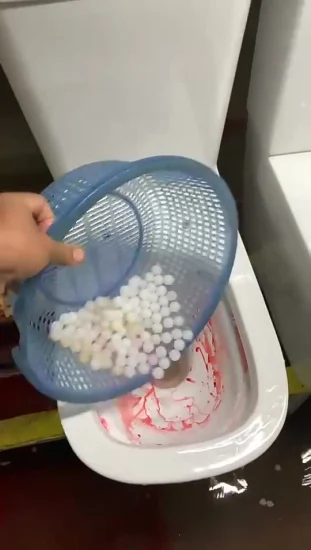Can One to Flush Food in the Toilet?
Can One to Flush Food in the Toilet?
Blog Article
In this article further down yow will discover a bunch of reliable additional info regarding Is it safe to flush food (especially rice) down the toilet?.

Introduction
Many people are frequently faced with the predicament of what to do with food waste, particularly when it involves leftovers or scraps. One typical inquiry that arises is whether it's all right to purge food down the bathroom. In this post, we'll delve into the reasons that people might consider flushing food, the effects of doing so, and alternate methods for correct disposal.
Reasons why individuals might take into consideration flushing food
Lack of understanding
Some people may not know the potential harm caused by flushing food down the toilet. They may wrongly think that it's a harmless technique.
Convenience
Purging food down the bathroom might seem like a fast and very easy solution to dealing with undesirable scraps, specifically when there's no nearby trash bin offered.
Negligence
Sometimes, individuals may merely pick to flush food out of sheer idleness, without thinking about the repercussions of their actions.
Effects of flushing food down the toilet
Environmental influence
Food waste that ends up in waterways can contribute to pollution and harm marine ecosystems. Furthermore, the water made use of to flush food can strain water sources.
Plumbing concerns
Purging food can cause blocked pipes and drains, triggering costly plumbing repair services and troubles.
Sorts of food that must not be purged
Fibrous foods
Foods with coarse appearances such as celery or corn husks can get tangled in pipelines and trigger blockages.
Starchy foods
Starchy foods like pasta and rice can take in water and swell, leading to blockages in pipes.
Oils and fats
Greasy foods like bacon or cooking oils should never ever be purged down the bathroom as they can solidify and trigger obstructions.
Appropriate disposal methods for food waste
Making use of a waste disposal unit
For homes equipped with garbage disposals, food scraps can be ground up and flushed via the plumbing system. Nevertheless, not all foods are suitable for disposal in this way.
Recycling
Particular food packaging materials can be reused, lowering waste and decreasing environmental influence.
Composting
Composting is an eco-friendly way to get rid of food waste. Organic products can be composted and utilized to enhance soil for gardening.
The importance of appropriate waste management
Minimizing ecological damage
Proper waste administration techniques, such as composting and recycling, help lessen contamination and maintain natural deposits for future generations.
Protecting plumbing systems
By staying clear of the technique of flushing food down the bathroom, homeowners can avoid costly plumbing repair services and maintain the stability of their plumbing systems.
Conclusion
To conclude, while it might be tempting to flush food down the toilet for benefit, it is very important to recognize the prospective consequences of this activity. By embracing proper waste administration techniques and dealing with food waste sensibly, individuals can contribute to healthier plumbing systems and a cleaner atmosphere for all.
FLUSH FOOD DOWN THE TOILET?
FLUSHING FOOD CAN CAUSE BLOCKED DRAINS IN YOUR HOME
All of the plumbing fixtures in your home are connected to the same sewer pipe outside of your home. This outdoor sewer pipe is responsible for transporting all the wastewater from your home to the Council sewer mains. Even small pieces of food that go down the kitchen sink can cause problems for your sewer. It should therefore be obvious that flushing larger bits of food, such as meat, risks a clog in either the toilet itself or the sewer pipes. Flushing greasy food is even more problematic because oil coagulates when it cools, coating the interior lining of your pipes.
THE TOILET IS NOT A BIN
Food isn’t the only thing that people shouldn’t be flushing down the toilet. People use the toilet to dispose of all kinds of things such as tampons, makeup wipes, dental floss, kitty litter and even underwear. Water goes to great lengths to educate residents about the high costs and stress placed on wastewater treatment systems simply from people flushing the wrong stuff down the toilet. It costs taxpayers millions of dollars each year, and homeowners thousands in blocked drain repairs.
FLUSHING FOOD IS A WASTE OF WATER
Flushing food is a waste of our most precious resource - water. In June this year Level 1 water restrictions were introduced to protect water supply from drought conditions. Much of New South Wales continues to be affected by prolonged drought with recent figures revealing up to 97 per cent of the state remains in drought. Depending on whether you have a single or dual flush toilet, every single flush uses between five and 11 litres of water. In the current climate this is a huge amount of water to be wasting on flushing food that should be placed in the bin (or better yet, the compost).
https://www.jabplumbingsolutions.com.au/blog/can-you-flush-food-down-the-toilet

Do you enjoy reading up on ? Try leaving feedback down below. We would be happy to find out your opinion about this blog. We are looking forward to see you back again soon. Loved our blog entry? Please share it. Help others check it out. Bless you for your time. Revisit us soon.
Schedule An Appointment Report this page